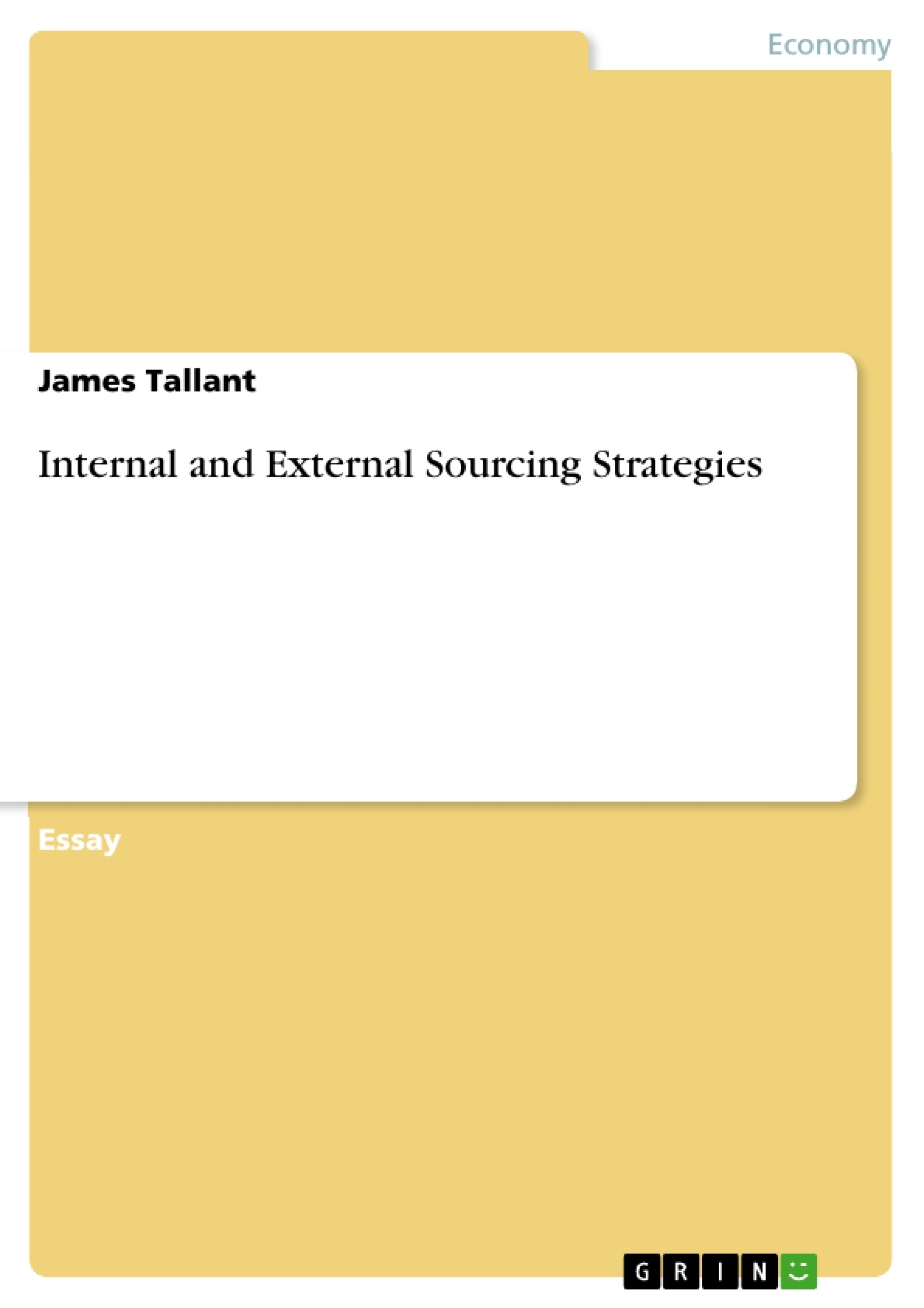Internal/External Sourcing Strategies Paper
Organizations face challenges to improve their financial standing. Challenges such as product design and quality, cost of goods sold, and cycle time contribute to an organizations financial health. To assist organizations better control these factors, supply chain management techniques, when implemented improve costs, delivery cycle times, and quality. Supply chain management achieves these goals through the use of strategic sourcing. Strategic sourcing leads organizations’ to decide whether they want to keep certain activities in-house or internally or if they want to outsource or have certain activities done externally for them by another organization or supplier. This paper will evaluate the differences between internal and external sourcing strategies in service and manufacturing organizations. In addition, advantages and disadvantages of outsourcing to foreign countries are reviewed. Finally, a favorable position of outsourcing to a foreign country is undertaken with supporting evidence.
Inhaltsverzeichnis (Table of Contents)
- Internal/External Sourcing
- Internal/External Sourcing Strategies
- Service Organizations Internal Sourcing
- Manufacturing Organizations Internal Sourcing
- Service Organizations External Sourcing
- Manufacturing Organizations External Sourcing
- Global Sourcing Advantages
- Global Sourcing Disadvantages
- Favoring Outsourcing to a Foreign Country
Zielsetzung und Themenschwerpunkte (Objectives and Key Themes)
This paper explores the strategic decision-making process involved in internal and external sourcing, particularly in service and manufacturing organizations. It examines the advantages and disadvantages of outsourcing to foreign countries, ultimately advocating for the benefits of global sourcing.
- Internal vs. External Sourcing Strategies
- Core Competencies and Value Engineering
- Global Sourcing Advantages and Disadvantages
- The Role of Supply Chain Management in Strategic Sourcing
- Impact of Outsourcing on Organizational Mission, Vision, and Values
Zusammenfassung der Kapitel (Chapter Summaries)
- Internal/External Sourcing Strategies: Introduces the concept of internal and external sourcing, emphasizing the importance of strategic sourcing in improving an organization's financial health. It highlights the need to determine whether to keep activities in-house or outsource them to external suppliers.
- Service Organizations Internal Sourcing: Examines the rationale behind service organizations retaining certain functions internally, often related to core competencies and customer satisfaction. It discusses the costs associated with selecting and controlling external service providers.
- Manufacturing Organizations Internal Sourcing: Explores the similar decision-making process for manufacturing organizations, emphasizing the importance of identifying and retaining core competencies. It highlights the significance of final production, assembly, and research and development as vital functions often kept in-house.
- Service Organizations External Sourcing: Discusses the increasing trend of service organizations outsourcing functions like customer service, technical service, and product design to specialized firms. It explores the use of spending analysis and e-sourcing tools to justify external sourcing decisions.
- Manufacturing Organizations External Sourcing: Outlines the process of external sourcing in manufacturing organizations, emphasizing the need for additional research and recommendations. It details a 10-step approach for identifying and selecting suitable external suppliers for manufacturing components.
- Global Sourcing Advantages: Highlights the benefits of global sourcing, including lower costs, improved quality, access to advanced technology, and faster delivery to foreign locations. It also emphasizes the potential for competitive advantage through patent protection.
- Global Sourcing Disadvantages: Presents the challenges associated with global sourcing, such as complex supplier selection, increased costs due to duties, tariffs, and currency fluctuations, security concerns, and potential logistical difficulties.
Schlüsselwörter (Keywords)
The paper explores the concepts of internal and external sourcing, core competencies, strategic sourcing, global sourcing, supply chain management, value engineering, make versus buy analysis, customer satisfaction, cost optimization, quality improvement, and competitive advantage. It also examines the impact of outsourcing on organizational mission, vision, and values.
- Quote paper
- James Tallant (Author), 2010, Internal and External Sourcing Strategies, Munich, GRIN Verlag, https://www.grin.com/document/167300
-

-

-

-
Upload your own papers! Earn money and win an iPhone X. -

-
Upload your own papers! Earn money and win an iPhone X. -

-
Upload your own papers! Earn money and win an iPhone X. -

-
Upload your own papers! Earn money and win an iPhone X. -

-
Upload your own papers! Earn money and win an iPhone X.

